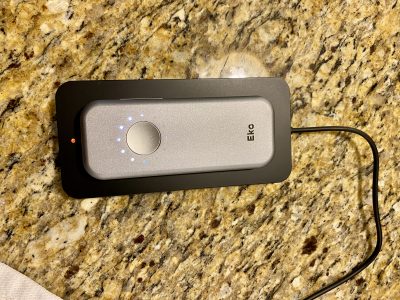There is a new, intentional and horrible trend in nursing home transfers to the ED, and it’s not the patients. It’s the records that come with them, or more specifically those that don’t. Allow me to explain.
The patient is sent with a chief complaint, a lot of weeks-to-month-old labs and a medication list, but all the administration times have been cut off from their typed MAR’s. (MAR stands for Medication Administration Record, and is the only written record of which patient got what medicine, when). Got that? A patient sent from a nursing home comes into the ED with a list of their medications, but the list has the times and dates of administration removed. Intentionally. They come in with little strips of paper with the medication names and doses, but the administration times are on the paper that wasn’t sent. That’s not an accident. Definitely not.
When they’re my patients I now ask for a faxing of the patient’s MAR from the nursing home with the removed information included, because it is, you know, part of the medical record, and may well be useful in the diagnosis and treatment of the patient. A patient often sent in with “AMS” (altered mental status) as the one-line explanation for the transfer, and the patient is on several (usually more than a dozen) medications, at least a third of which could cause an altered mental status. It would, in that case, be nice to know if they got their regular, let alone their PRN (as needed) sedative(s), as well as all their other medications.
The kicker is, since I cannot determine when their medications were administered (because the times were cut off of the copies sent to the ED), a lot of very useful information is now denied to me, the ED physician, and then most likely to the admitting team, since none of us can say who got what medication, and cannot account for their altered mental status. (I’m using AMS as the example here, but there are other complaints that could be medication related).
This intentional removal has happened often enough ( from different nursing homes and at different ED’s) that it’s clearly part of an organized effort on the part of Nursing Homes. I’m at a loss to think of a single innocent reason why this practice would have started. When I’ve called personally to have the information faxed (for patient care, the reason they sent the patient to the ED) the Nursing Home nurses routinely say that “It’s policy”, and then sometimes send the information, and sometimes they don’t.
This is outrageous. A chronically ill patient is sent to a higher level of care for an acute problem, and without a complete information base; but not just that, information crucial to the care of the patient that’s being intentionally withheld.
It is a situation that makes me, frankly, nuts. When did intentionally withholding critical patient care information become acceptable? Seriously, have these people not learned from history? The coverup is always, always worse than the crime, and is looked upon less favorably and punished more severely that any original offense. You could ask Nixon, but he’s dead.
Send me all the info you have, and our patient will live or die based on their problem(s); withhold information I need, and it’s on you, Nursing Home nurses.
(Nursing homes that engage in this awful practice, beware: I now document ‘Patient sent to ED with MAR with times removed’ on my charts, and you’re kidding yourselves if you think this kind of obfuscation will get you out of a medicolegal jam. Were I a plaintiff’s attorney (and I’m not) I’d be at least somewhat interested in what was withheld, by whom, and why. Still seem like a good practice?).




Well, the practice of cutting out the administration times, dates, of M.A.R.s has ben happening in Northwest Florida for the past 4 years at least. It is exasperating to try and fingure the cause of why a patient may have altered mental status, hypotension, low blood sugar, low blood pressure, in congestive heart failure… get the picture… when the actual date and time of the medication prescribed was last given is removed from the information. For the area I work in, I can relate it to an episode where a poor pt (I am being careful to not provide information to violate HIPAA) was stripped of their rights/declared incompetent, all possessions were placed in someone elses’ care, the patient continued on a downward spiral, edema to the lower extremities, confusion, low blood pressure, borderline low-normal respirations, and swallowing problems to name a few of their symptoms – Any guesses what their problem was? They had a thyroid problem (it was also documented clearly in the H&P) and hadn’t received their medication from the nursing home for many months that was traceable back by using the M.A.R. I pointed this out to the facility who ignored me then brought it to the attention of the pt’s physician’s office so it could be fixed and the pt have what’s left of their health back. I didn’t throw the facility or the doctor under the proverbial “bus” but sought to be a patient advocate. The result, a complaint from the doctor to my medical director (no, I didn’t get into any trouble from the director) to talk with his paramedics about telling a doctor what to do with their patient and M.A.R.s from many of the nursing homes in our area that no longer provide EMS or the ER with the administration part of the M.A.R. What is acceptable today from anyone in the removal of vital health information will come back to haunt those who may have to rely on these same systems for their care or care for their loved ones at some point in the future. How about fixing the problem before you or someone you may love falls victim to the insane practice? Karma can really bite!
Doc,
I understand your concern and you are correct that this nursing home behavior is a problem. I think I know the reason behind the behavior and it probably is due to nursing home policies and procedures in meeting Joint Commission standards for Medication Reconciliation. Joint Commission standard MM.1.10 EP#2 and National Patient Safety Goal #8 address this. Also, on the discharge side there is an additional standard: Provide the Discharge List of Current Medications to the next provider(s) (PC.15.30, EP #1) and to the patient (PC.15.20, EP #9).
The basic requirement is a list of the patient’s medications is to be provided to the next provider of care. There is no requirement that the list includes the time of the last dose. Depending on facility policies, the time of the last dose may or may not be included. If the nursing staff is incapable of fully completing a form with all the information, the facilities tend to take the short cut approach. In actuality, a full copy of the patient’s MAR meets the JC standard. The medication list doesn’t have to be on a specific form, but facilities don’t want to send patients home with copies of their MARs for multiple reasons, so they have a separate medication reconciliation form for this information.
It appears the nursing homes in your area, in consultation with their consultant pharmacist, LTC pharmacy policies and procedures, Director of Nursing, and Medical Director cooked up the interpretation of medication reconciliation you are seeing. In order to fix the problem, you are going to need the help of all the ER docs and the group will need to talk or meet with all of the above individuals or directors and recommend that they change their policies and procedures. Of course, you can also contact Joint Commission and report all of this.
Below is taken directly from the Joint Commission website:
Joint Commission requirements and recommendations.
In July 2004, the Joint Commission announced 2005 National Patient Safety Goal #8 to “accurately and completely reconcile medications across the continuum of care.” During 2005, accredited organizations were required to develop and test processes for medication reconciliation to be implemented by January 2006. The requirements of the Goal for 2006 are:
8a) Implement a process for obtaining and documenting a complete list of the patient’s current medications upon the patient’s admission to the organization and with the involvement of the patient. This process includes a comparison of the medications the organization provides to those on the list. [Note: While this safety goal does not require a separate form for the medication list, many organizations have found it useful to develop and implement one or more forms to support the medication reconciliation process.]
8b) A complete list of the patient’s medications is communicated to the next provider of service when a patient is referred or transferred to another setting, service, practitioner or level of care within or outside the organization.**
Implementation Expectations for Requirement 8b state: At a minimum, reconciliation must occur any time the organization requires that orders be rewritten and any time the patient changes service, setting, provider or level of care and new medication orders are written. For transitions not involving new medications or rewriting of orders, the organization should determine whether reconciliation must occur.
On discharge from the facility, in addition to communicating an updated list to the next provider of care, provide the patient with the complete list of medications* that he or she will be taking after discharge from the facility, as well as instructions on how and how long to continue taking any newly prescribed medications. Encourage the patient to carry the list with him or her and to share the list with any providers of care, including primary care and specialist physicians, nurses, pharmacists and other caregivers.
End of JC text.
It sounds to me like you have a definite nursing issue that needs to be addressed. It is obvious that the nursing homes do not want to send copies of the MAR, because it might show there were doses not given as ordered, and chose instead to cut off the left side of the MAR that lists the medications and send that to the ER. Think of the work required in recopying all of the drugs and the time of the last dose on a separate form when there may be 15-20 medications. It takes too long when a patient is being transferred to an ER by paramedic. In my opinion what needs to be done is that either the nursing home software generates a list of the patient’s medications with a place for the last administration time to be handwritten or the MAR is copied with the admin times covered and the times of the last doses are handwritten on the copy beside each medication.
PharmaGhost
-30-
First off, finding and reading this blog made my evening…
This practice of not giving us (EMS/ER) times on the MARs has been happening in my county at the 3 nursing homes for atleast the last 3-4 years. We recently started demanding the full MARs, threatening to report the facility to the State Board of Health if they wound’t give them to us. Since then we have started getting MARs with times a little easier now. :-)
DNR/POLST (Physician Orders for Life-Sustaining Treatment) status problem are also the same here. Personally, I love the new POLST forms as they specifically state what should/should not be done for the patient, in great detail. The DNR forms we used to see were fairly limited in their application to our day to day struggles with the nursing homes. We have one facility that has actually told us they can’t use the POLST forms because their a “Skilled Nursing Facility, and that’s not what they were designed for..”